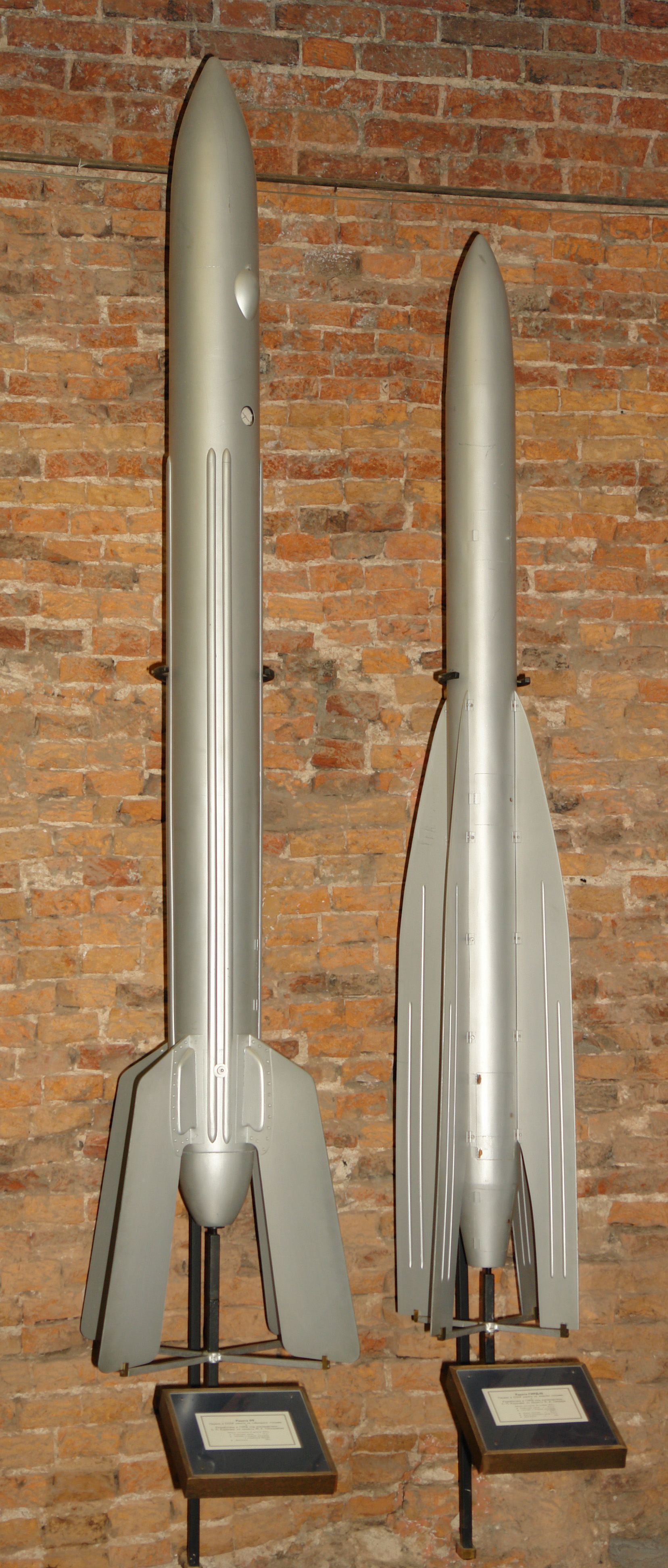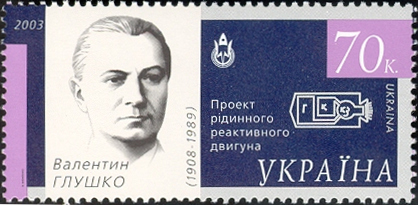|
GIRD-X
The Moscow-based Group for the Study of Reactive Motion (also 'Group for the Investigation of Reactive Engines and Reactive Flight' and 'Jet Propulsion Study Group') (russian: Группа изучения реактивного движения, Gruppa izucheniya reaktivnogo dvizheniya, better known for its Russian abbreviation , GIRD) was a Soviet research bureau founded in 1931 to study various aspects of rocketry. GIRD launched the first Soviet liquid propellant rocket in August 1933. In November 1933 it was incorporated into the Reactive Scientific Research Institute (, , РНИИ, RNII). History The inspiration for establishing the organisation came from Fredrich Tsander, a scientist, inventor, and romantic who dreamed of space travel. Tsander had begun to consider rocket-powered interplanetary flight as early as 1907 and was one of the founding members of the Society for the Study of Interplanetary Communication in 1924. In September 1931 Tsander formed the Moscow-based ' ... [...More Info...] [...Related Items...] OR: [Wikipedia] [Google] [Baidu] |
Liquid-propellant Rocket
A liquid-propellant rocket or liquid rocket utilizes a rocket engine that uses liquid rocket propellant, liquid propellants. Liquids are desirable because they have a reasonably high density and high Specific impulse, specific impulse (''I''sp). This allows the volume of the propellant tanks to be relatively low. It is also possible to use lightweight centrifugal turbopumps to pump the rocket propellant from the tanks into the combustion chamber, which means that the propellants can be kept under low pressure. This permits the use of low-mass propellant tanks that do not need to resist the high pressures needed to store significant amounts of gasses, resulting in a low mass ratio for the rocket. An inert gas stored in a tank at a high pressure is sometimes used instead of pumps in simpler small engines to force the propellants into the combustion chamber. These engines may have a higher mass ratio, but are usually more reliable, and are therefore used widely in satellites for orbit ... [...More Info...] [...Related Items...] OR: [Wikipedia] [Google] [Baidu] |
Sergei Korolev
Sergei Pavlovich Korolev (russian: Сергей Павлович Королёв, Sergey Pavlovich Korolyov, sʲɪrˈɡʲej ˈpavləvʲɪtɕ kərɐˈlʲɵf, Ru-Sergei Pavlovich Korolev.ogg; ukr, Сергій Павлович Корольов, Serhiy Pavlovych Korol'ov, sɛrˈɦij ˈpavlovɪtʃ koroˈlʲou̯) 14 January 1966) was a lead Soviet Aerospace engineering, rocket engineer and spacecraft designer during the Space Race between the United States and the Soviet Union in the 1950s and 1960s. He is regarded by many as the father of practical astronautics. He was involved in the development of the R-7 Semyorka, R-7 Rocket, Sputnik 1, launching Laika, Sputnik 3, the first luna 2, human-made object to make contact with another celestial body, Soviet space dogs#Belka and Strelka, Belka and Strelka, the first human being, Yuri Gagarin, into space, Voskhod 1, and the first person, Alexei Leonov, to conduct a Voskhod 2, spacewalk. Although Korolev trained as an aircraft designer, h ... [...More Info...] [...Related Items...] OR: [Wikipedia] [Google] [Baidu] |
Sergey Korolev
Sergei Pavlovich Korolev (russian: Сергей Павлович Королёв, Sergey Pavlovich Korolyov, sʲɪrˈɡʲej ˈpavləvʲɪtɕ kərɐˈlʲɵf, Ru-Sergei Pavlovich Korolev.ogg; ukr, Сергій Павлович Корольов, Serhiy Pavlovych Korol'ov, sɛrˈɦij ˈpavlovɪtʃ koroˈlʲou̯) 14 January 1966) was a lead Soviet rocket engineer and spacecraft designer during the Space Race between the United States and the Soviet Union in the 1950s and 1960s. He is regarded by many as the father of practical astronautics. He was involved in the development of the R-7 Rocket, Sputnik 1, launching Laika, Sputnik 3, the first human-made object to make contact with another celestial body, Belka and Strelka, the first human being, Yuri Gagarin, into space, Voskhod 1, and the first person, Alexei Leonov, to conduct a spacewalk. Although Korolev trained as an aircraft designer, his greatest strengths proved to be in design integration, organization and strategic pl ... [...More Info...] [...Related Items...] OR: [Wikipedia] [Google] [Baidu] |
Gas Dynamics Laboratory
Gas Dynamics Laboratory (GDL) (russian: Газодинамическая лаборатория) was the first Soviet research and development laboratory to focus on rocket technology. Its activities were initially devoted to the development of solid propellant rockets, which became the prototypes of missiles in the Katyusha rocket launcher, as well as liquid propellant rockets, which became the prototypes of Soviet rockets and spacecraft. At the end of 1933 it became part of the Reactive Scientific Research Institute (RNII). A number of craters on the far side of the Moon are named after GDL employees. History of the organization * First rocket research and development organization in the USSR.heading=Gas-Dynamic Laboratory * Created on 1 March 1921 in Moscow as the "Laboratory for the development of inventions by N. I. Tikhomirov" as part of the Main Artillery Directorate of the Red Army. * In 1928 the laboratory was relocated to Leningrad. * In July 1928, was renam ... [...More Info...] [...Related Items...] OR: [Wikipedia] [Google] [Baidu] |
Austria
Austria, , bar, Östareich officially the Republic of Austria, is a country in the southern part of Central Europe, lying in the Eastern Alps. It is a federation of nine states, one of which is the capital, Vienna, the most populous city and state. A landlocked country, Austria is bordered by Germany to the northwest, the Czech Republic to the north, Slovakia to the northeast, Hungary to the east, Slovenia and Italy to the south, and Switzerland and Liechtenstein to the west. The country occupies an area of and has a population of 9 million. Austria emerged from the remnants of the Eastern and Hungarian March at the end of the first millennium. Originally a margraviate of Bavaria, it developed into a duchy of the Holy Roman Empire in 1156 and was later made an archduchy in 1453. In the 16th century, Vienna began serving as the empire's administrative capital and Austria thus became the heartland of the Habsburg monarchy. After the dissolution of the H ... [...More Info...] [...Related Items...] OR: [Wikipedia] [Google] [Baidu] |
Eugen Sänger
Eugen Sänger (22 September 1905 – 10 February 1964) was an Austrian aerospace engineer best known for his contributions to lifting body and ramjet technology. Early career Sänger was born in the former mining town of Preßnitz (Přísečnice), near Komotau in Bohemia, at that time part of the Austro-Hungarian Empire. He studied civil engineering at the Technical Universities of Graz and Vienna. As a student, he came in contact with Hermann Oberth's book ''Die Rakete zu den Planetenräumen'' ("By Rocket into Planetary Space"), which inspired him to change from studying civil engineering to aeronautics. He also joined Germany's amateur rocket movement, the ''Verein für Raumschiffahrt'' (VfR – "Society for Space Travel") which was centered on Oberth. In 1932 Sänger became a member of the SS and was also a member of the NSDAP. Sänger made rocket-powered flight the subject of his thesis, but it was rejected by the university as too fanciful. In 1928 and 1929 the Opel RAK ... [...More Info...] [...Related Items...] OR: [Wikipedia] [Google] [Baidu] |
Regenerative Cooling (rocket)
Regenerative cooling, in the context of rocket engine design, is a configuration in which some or all of the propellant is passed through tubes, channels, or in a jacket around the combustion chamber or nozzle to cool the engine. This is effective because the propellants are often cryogenic. The heated propellant is then fed into a special gas-generator or injected directly into the main combustion chamber. History In 1857 Carl Wilhelm Siemens introduced the concept of regenerative cooling. On 10 May 1898, James Dewar used regenerative cooling to become the first to statically liquefy hydrogen. The concept of regenerative cooling was also mentioned in 1903 in an article by Konstantin Tsiolkovsky. Robert Goddard built the first regeneratively cooled engine in 1923, but rejected the scheme as too complex. A regeneratively cooled engine was built by the Italian researcher, Gaetano Arturo Crocco in 1930. The first Soviet engines to employ the technique were Fridrikh Tsander's OR-2 ... [...More Info...] [...Related Items...] OR: [Wikipedia] [Google] [Baidu] |
Kerosene
Kerosene, paraffin, or lamp oil is a combustible hydrocarbon liquid which is derived from petroleum. It is widely used as a fuel in aviation as well as households. Its name derives from el, κηρός (''keros'') meaning "wax", and was registered as a trademark by Canadian geologist and inventor Abraham Gesner in 1854 before evolving into a generic trademark. It is sometimes spelled kerosine in scientific and industrial usage. The term kerosene is common in much of Argentina, Australia, Canada, India, New Zealand, Nigeria, and the United States, while the term paraffin (or a closely related variant) is used in Chile, eastern Africa, South Africa, Norway, and in the United Kingdom. The term lamp oil, or the equivalent in the local languages, is common in the majority of Asia and the Southeastern United States. Liquid paraffin (called mineral oil in the US) is a more viscous and highly refined product which is used as a laxative. Paraffin wax is a waxy solid extracted from pet ... [...More Info...] [...Related Items...] OR: [Wikipedia] [Google] [Baidu] |
Nitric Acid
Nitric acid is the inorganic compound with the formula . It is a highly corrosive mineral acid. The compound is colorless, but older samples tend to be yellow cast due to decomposition into oxides of nitrogen. Most commercially available nitric acid has a concentration of 68% in water. When the solution contains more than 86% , it is referred to as ''fuming nitric acid''. Depending on the amount of nitrogen dioxide present, fuming nitric acid is further characterized as red fuming nitric acid at concentrations above 86%, or white fuming nitric acid at concentrations above 95%. Nitric acid is the primary reagent used for nitration – the addition of a nitro group, typically to an organic molecule. While some resulting nitro compounds are shock- and thermally-sensitive explosives, a few are stable enough to be used in munitions and demolition, while others are still more stable and used as pigments in inks and dyes. Nitric acid is also commonly used as a strong oxidizing agen ... [...More Info...] [...Related Items...] OR: [Wikipedia] [Google] [Baidu] |
Valentin Glushko
Valentin Petrovich Glushko (russian: Валенти́н Петро́вич Глушко́; uk, Валентин Петрович Глушко, Valentyn Petrovych Hlushko; born 2 September 1908 – 10 January 1989) was a Soviet engineer and the main designer of rocket engines in the Soviet space program during the heights of the Space Race between United States and the Soviet Union. Biography At the age of fourteen he became interested in aeronautics after reading novels by Jules Verne. He is known to have written a letter to Konstantin Tsiolkovsky in 1923. He studied at an Odessa trade school, where he learned to be a sheet metal worker. After graduation he apprenticed at a hydraulics fitting plant. He was first trained as a fitter, then moved to lathe operator. During his time in Odessa, Glushko performed experiments with explosives. These were recovered from unexploded artillery shells that had been left behind by the White Guards during their retreat. From 1924 to 1925 he wro ... [...More Info...] [...Related Items...] OR: [Wikipedia] [Google] [Baidu] |

.jpg)




